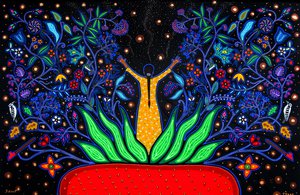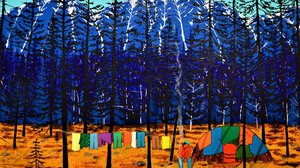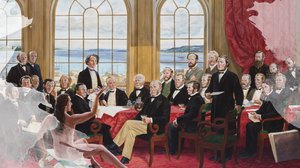Indigenous peoples have long held robust, relationship-driven legal orders that take all aspects of life into account. As Aimée Craft — an Indigenous lawyer (Anishinaabe-Métis) and assistant professor at the Faculty of Common Law, University of Ottawa — explains in this video, Anishinaabe spiritual, natural, customary and human legal structures are connected, and must be meaningfully considered in decisions related to water. For example, in generating hydroelectric power — Anishinaabe law can guide that decision making. Article 25 of the United Nations Declaration on the Rights of Indigenous Peoples (UNDRIP) identifies that Indigenous peoples have distinctive spiritual relationships with lands and waters, and that they have the right to maintain those relationships. It is important for governments to respect the rights of Indigenous peoples to make decisions over their lands and territories understanding the spiritual relationships at play.
How UNDRIP Recognizes the Sacred Relationship with Nibi (Water)
I can offer an understanding of Anishinaabe law as I’ve come to know it, and I’m still learning because I think every person — and we know this — every person is continuously learning about what it is to live in the world. And I have elders who say that Anishinaabe law is not a philosophy or a theory, it’s a way of life. And so we practise that way of life and we learn from it.
And to think to Anishinaabe law as something we are born with as a set of sacred or spiritual instructions that are given to us as we journey towards the earth, allows us then to see the world differently and learn from our natural environment.
And so that creates, from this core of spiritual law, an outer layer of natural law. And that natural law is what we observe from looking at our other brothers and sisters that are part of Creation.
From there we’ve developed this whole wealth of law over time. And it’s a law that governs interactions amongst humans, as well as other beings, and how do we manage all those messy relationships?
Building on all of that, and sometimes in response to a particular situation, we’ll have what is referred to as human law. And that is sometimes also talked about in the context of temporal law. So it’s a law that comes in a particular form, at a moment in time, given a particular context and that is supported by that core of spiritual law, that understanding that comes from the natural world, the law that we’ve developed over time, and then we have a human response to a particular context and an ability to make decisions based on our protocols and our understanding of all of these levels of law that are ebbing and flowing and interacting with each other so that we can have appropriate human responses, and [so] that we can communicate with each other about what those responsibilities and obligations are.
That’s the basic structure of Anishinaabe law, and when we think about water as part of that, we have spiritual instructions related to water. We see water’s interaction in the natural environment and how other beings interact with water. That means observing natural environments, seeing what’s happening with the water itself, but [also] other beings in Creation — fish, frogs, snakes, trees that surround the water, rocks that hold the waterline. We see the fluctuations in the high water mark by looking at those rocks. So, all of those other beings are being responsive to the water and for some reason as humans we sometimes think that water is this resource — it’s either going to give us power through hydroelectric generation or it’s going to sustain us by being clean for us to drink, and we think of it as really fragmented resources.
Article 25 of UNDRIP ensures that there is a protection of this longer-term relationship, this spiritual relationship between Indigenous people and their waters, lands, territories, in a way that allows for protection of that water, or that land or that territory, for future generations. So there are elements that are found within UNDRIP, which is aiming to affirm the self-determination of Indigenous people around the world in recognizing that special relationship that people have with lands and territories. And that includes that relationship with water, and to ensure that it can be preserved over time and recognizing also the spiritual nature of it. So UNDRIP is not recognizing water as a resource to be owned or managed, or controlled like most Western legal systems do, but it is actually saying, as Indigenous people, there is something further to that relationship, there is something that is deeper that emanates from your relationship with water, and that you have a right to preserve and maintain that.
For media inquiries, usage rights or other questions please contact CIGI.
The opinions expressed in this article/multimedia are those of the author(s) and do not necessarily reflect the views of CIGI or its Board of Directors.


